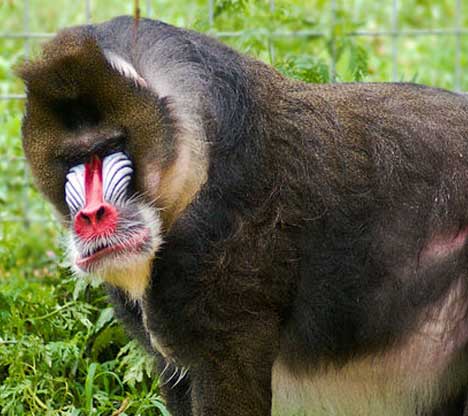Mandrill Baboon

The mandrill is a medium to large sized primate, natively found in a small pocket of tropical jungle in western-central Africa. The mandrill is most commonly known for it’s red and blue coloured nose and it’s multi coloured rear end. The mandrill is not related to the great apes but is thought to be closely related to the baboon, another medium-sized African primate that is found in eastern and southern Africa.
The mandrill was even once thought to be a sub-species of baboon but this is now not believed to be the case.The Mandrill is found in the tropical rainforests and occasionally grasslands of southern Cameroon, Gabon, Equatorial Guinea, and Congo in western-central Africa. The mandrill’s habitat is bordered by the Sanaga River to the north and the Ogooué and Ivindo rivers to the east. Recent research suggests that mandrill populations north and south of the Ogooué river are so genetically different that they are in fact separate subspecies.
Mandrills have distinctively coloured noses and rumps which make them stand out in the forest. The colours of the females nose are much duller than the males, and the females are also nearly half the size of the male. The male mandrill has incredibly long teeth, which he bares as a caution to approachers.
The male mandrill has these adaptations so that he can show himself off to other mandrill and also intimidate predators.Mandrills are sociable animals and inhabit areas of forest in large groups known as a troop. The mandrill troop primarily includes female mandrills and their young who are led by a single dominant male mandrill. The alpha male mandrill both mates with his females and protects them.
Most adult male mandrills that are not leading a troop tend to be solitary animals. Mandrills are omnivorous animals and therefore eat almost anything. The mandrill primarily feeds on fruits, berries, seeds, nuts, roots, leaves, insects and even smallmammals and reptiles. Most of the mandrills diet is found at ground level or just above.
